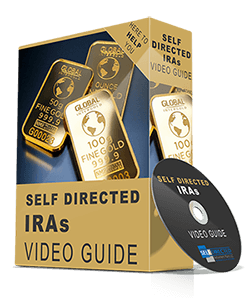Whether you already have an IRA or are planning to open one, there are a few things you should keep in mind. This account is more than a “piggy bank” where you put away extra cash every few years, but can prove to be a valuable personal finance tool for your future security. In fact, it’s likely to be your main source of retirement income.
These 5 tips will help you save the right way, improve gains and leverage tax benefits for your IRA:
Save As Much As Possible
Maximize your contributions as far as possible, since compound interest allows even small sums to grow tremendously over time. Aim for the maximum limit, which is $5,500 for those under the age of 50 and an additional $1,000 in catch-up contributions after you turn 50.
If you invest $5,500 per year at an average interest rate of 8%, you will have over $160,000 in the account after 15 years. The earlier you start, the more you will have by the time you retire, and catch-up contributions after the age of 50 let you boost your retirement savings even further.
Invest in a Roth IRA
Consider investing in a Roth IRA if you’re still a long way from retirement, unless you’re self-employed (in which case an SEP-IRA or SIMPLE plan is better). A Roth IRA is funded with post-tax contributions, but your earnings and withdrawals are tax-free as long as you follow the rules.
There’s no required minimum distribution either, unlike a traditional IRA. Roth IRAs can be very helpful if you don’t need money from the account, expect to receive Social Security benefits or think you will be in a higher tax bracket by the time you retire.
Roth IRA Conversions
It’s a good idea to convert your traditional IRA into a Roth IRA if you’ve already got savings in the latter. While you will pay tax on the amount you’re converting, the interest on that money will continue to grow tax-free over the years. This could be a very smart move, especially if you time it right.
A bad year when your taxable income is very low is a good time to convert traditional IRA funds without paying extra taxes. Another good time is when your traditional IRA assets drop in value due to market fluctuations, since your tax bill will be lower.
Rollover Your 401k
When you’re changing jobs, you can rollover your old 401k savings into your new employer’s defined contribution plan or into an IRA. This is a better choice than cashing out your funds, since you will be liable for taxes as well as a 10% early-withdrawal penalty if you’re under the age of 59½.
Rolling over to an IRA instead of another 401k allows you to choose where these funds will be invested, and fees are often lower too. Just ensure you choose the right IRA based on the type of defined contribution plan, e.g. rollovers from traditional 401k plans to Roth IRAs are not tax-free.
Watch the Fees
No matter what IRA type you choose, pay attention to any commissions and fees that will be applicable. These can cut into your gains if you aren’t careful, so shop around to find the best financial vehicles, services and brokerage options.
Remember that IRA contribution limits apply to all the money you invest, even if it’s in multiple accounts. Save and invest wisely today, so you have a sizeable chunk of money by the time you retire!
Need assistance organizing your finances?
Also Read: Investing in Real Estate with IRA Money: What Are Your Options? and My Parents Have No Money For Retirement

Rick Pendykoski is the owner of Self Directed Retirement Plans LLC, a retirement planning company based in Goodyear, AZ. He has over three decades of experience working with investments and retirement planning, and over the last ten years has turned his focus to self-directed ira accounts and alternative investments. If you need help and guidance with traditional or alternative investments, call him today (866) 639-0066.




